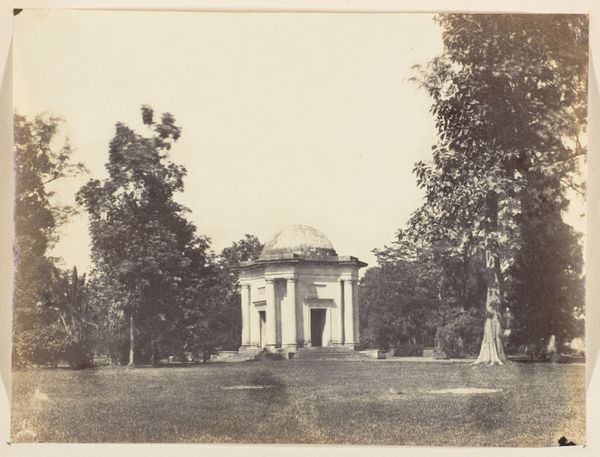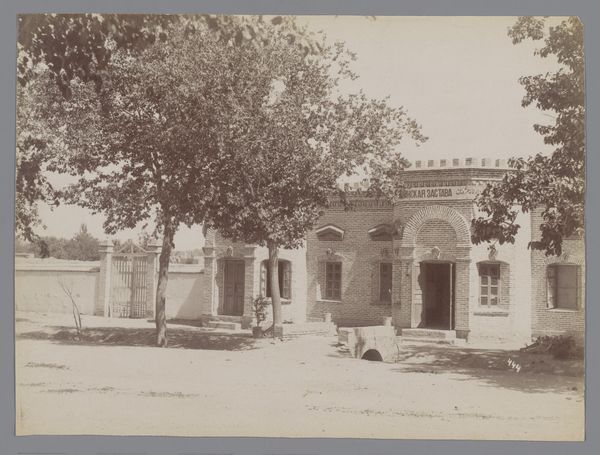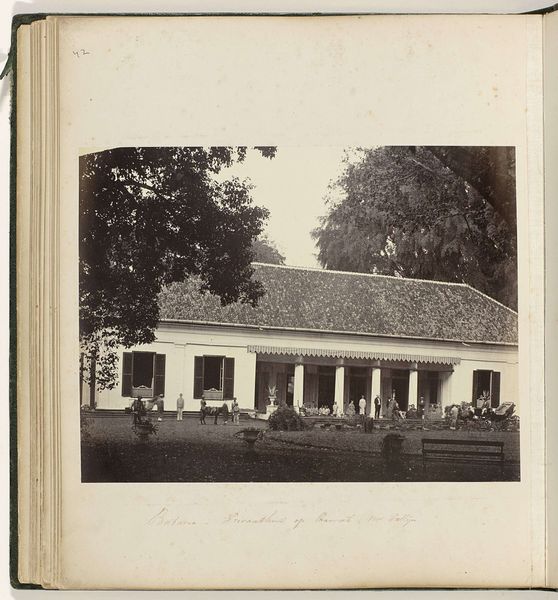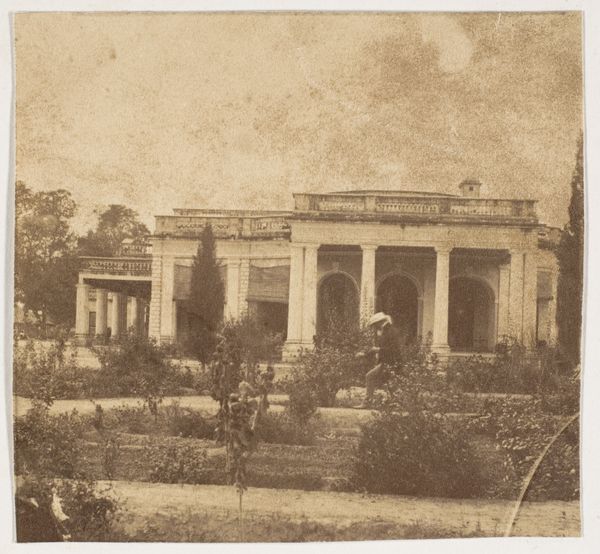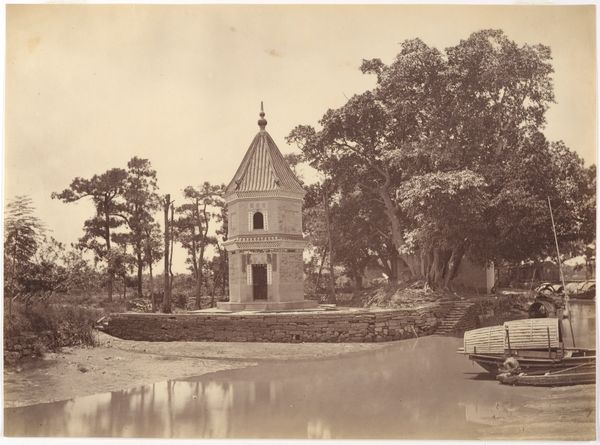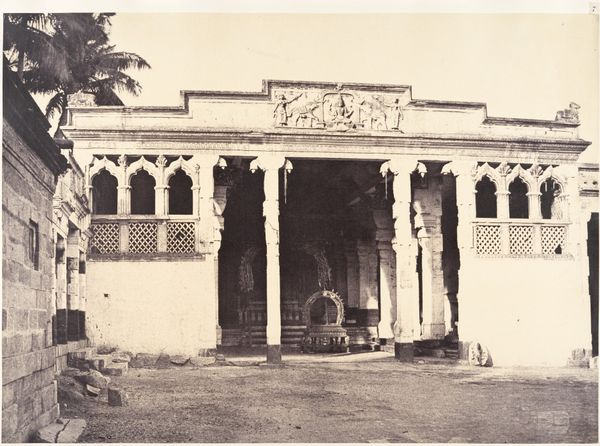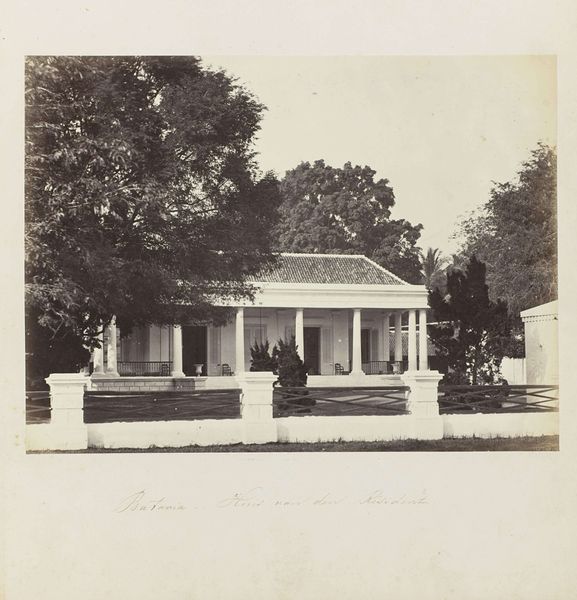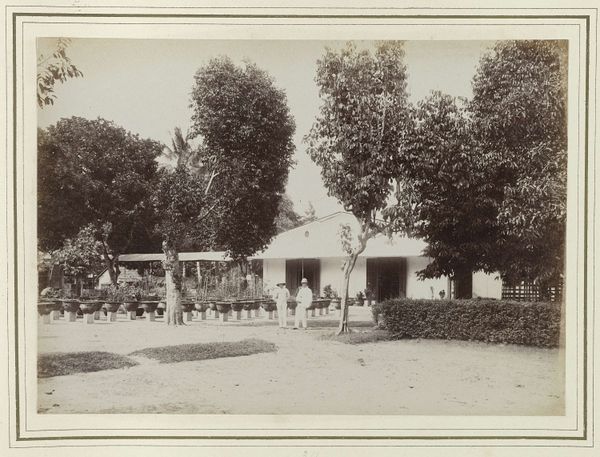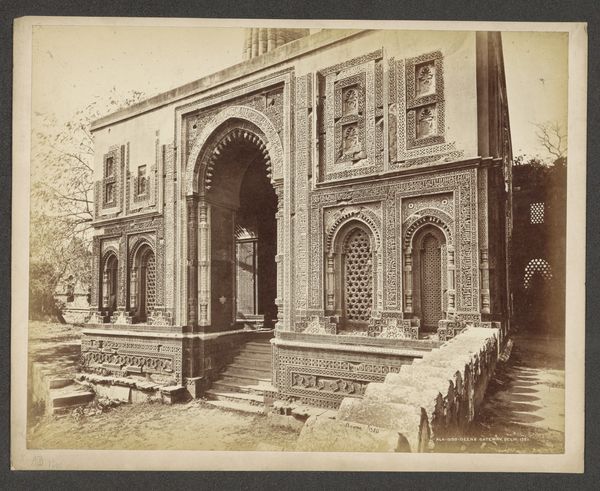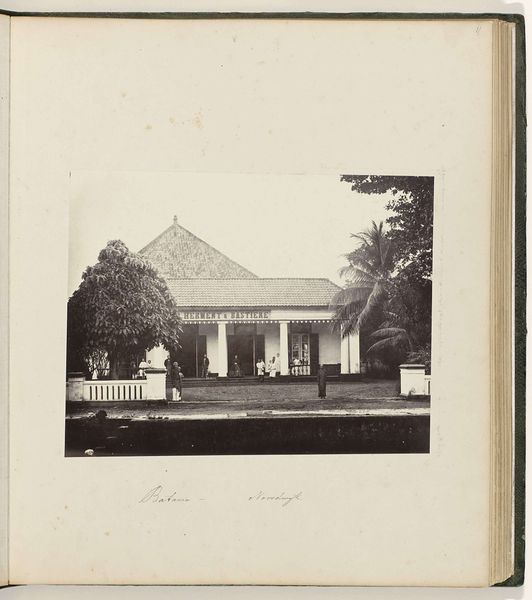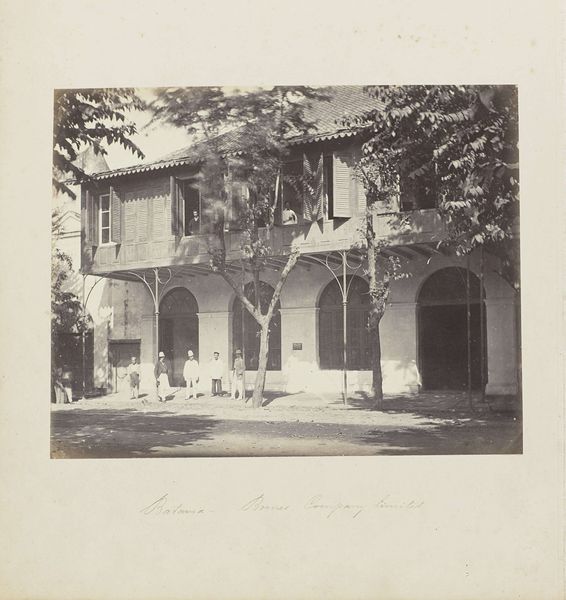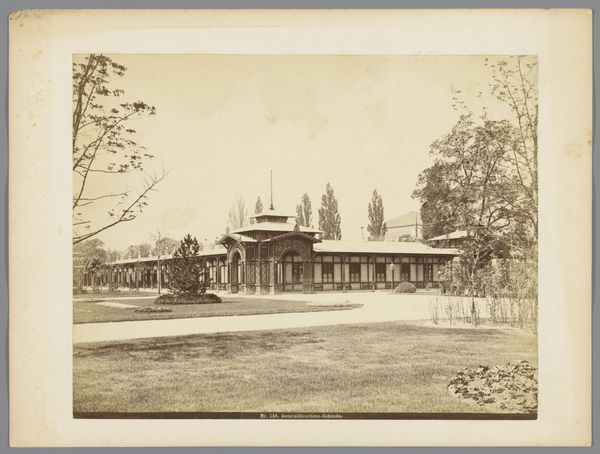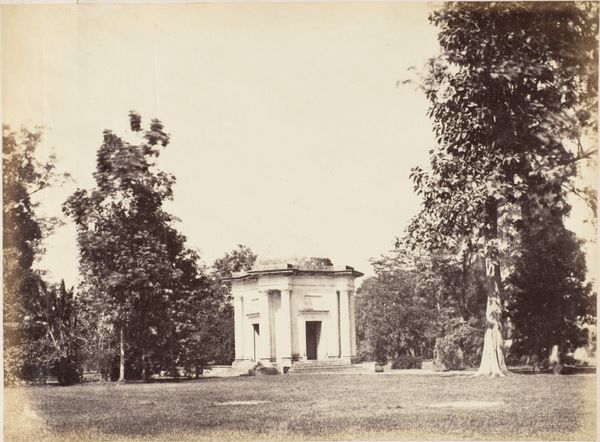
c-print, photography, gelatin-silver-print, architecture
#
landscape
#
c-print
#
archive photography
#
photography
#
historical photography
#
orientalism
#
gelatin-silver-print
#
cityscape
#
architecture
Dimensions: Image: 8 3/16 × 11 3/8 in. (20.8 × 28.9 cm)
Copyright: Public Domain
Curator: Immediately, I'm struck by the quiet, melancholic stillness of this scene. Editor: Indeed. What we're looking at is John Thomson's "Cemetery at Foochow," taken in 1869. This gelatin-silver print, currently held at the Metropolitan Museum of Art, provides a fascinating glimpse into 19th-century China through the lens of colonial photography. Curator: The juxtaposition of the European-style architecture of what appears to be a chapel, or perhaps a mausoleum, amidst the traditional Chinese graves... it's a potent symbol of cultural imposition, isn't it? Editor: Precisely. Thomson’s work, part of a broader Orientalist aesthetic, invites us to consider the power dynamics at play during this period. The cemetery, a site of remembrance and cultural heritage, is framed by a perspective that emphasizes the foreign presence, maybe speaking to concepts of territory and belonging in colonized spaces. Curator: The architectural symbols are really interesting. The Greek columns seem to convey authority and permanence, almost contrasting with what could be perceived as 'temporal' graves. Also, that might reveal some subconscious western views related to concepts of death. Editor: Symbolically rich, definitely. The white building certainly dominates the scene. White representing purity and mourning and so many meanings cross-culturally. The image subtly prompts discussions about life, death, and cultural adaptation. What remains consistent in that the architecture serves as the visual signifier for different social experiences. Curator: Absolutely, these subtle visual cues encourage a conversation. The photograph documents a particular time, it is also about intercultural tension, social hierarchy and, of course, the enduring power of images to carry layered meanings. Editor: Well said! Reflecting on Thomson's composition truly emphasizes the continuous dialogues between history, culture, and representation.
Comments
No comments
Be the first to comment and join the conversation on the ultimate creative platform.
